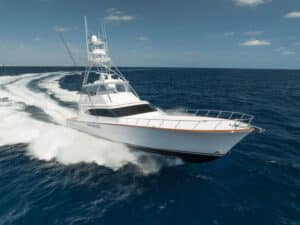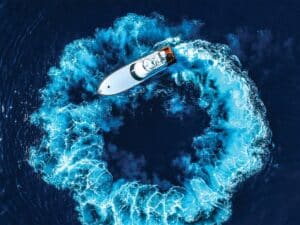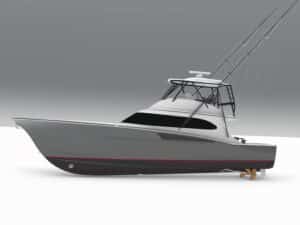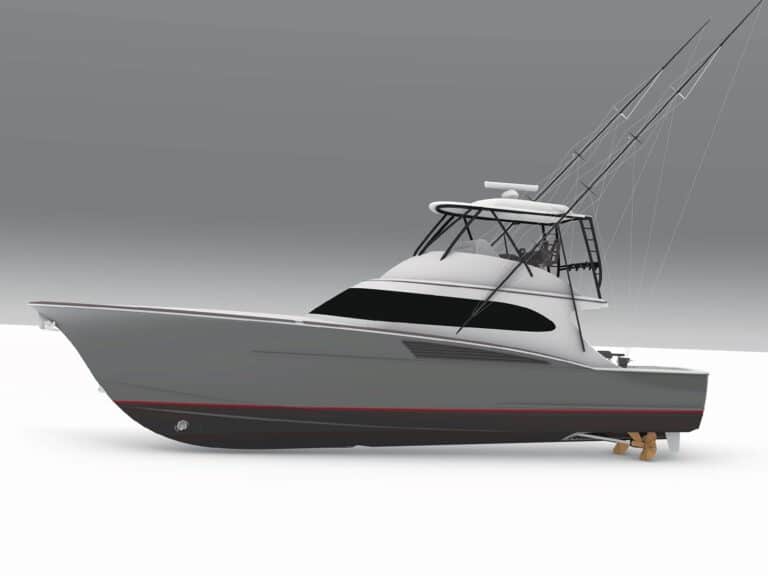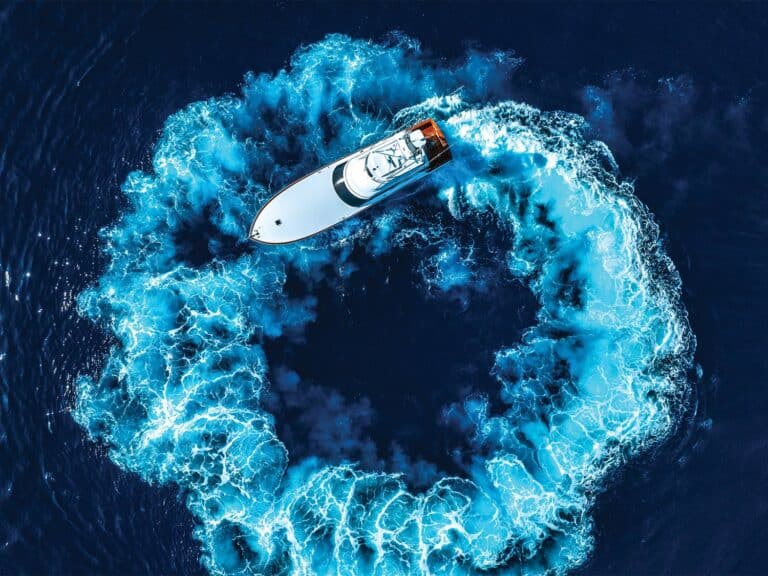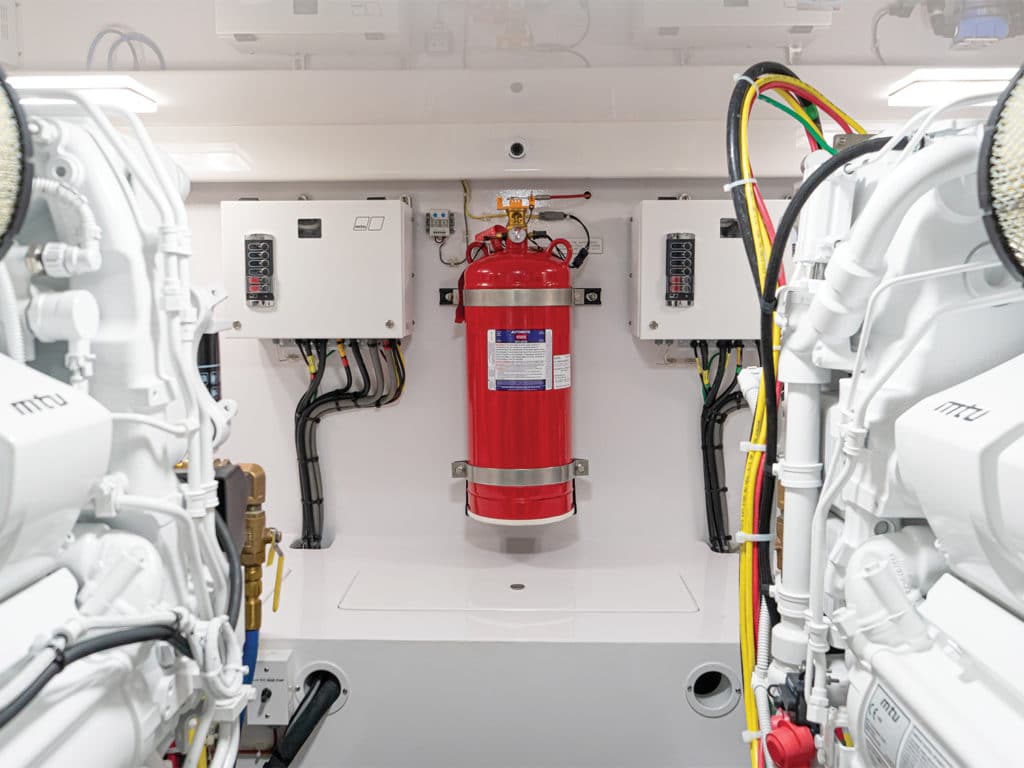
For most captains, it’s the most feared onboard emergency, and with good reason. Short of a violent capsizing or catastrophic collision, fire has the greatest potential to leave you and your crew bobbing in the ocean, seriously injured, without a life raft, EPIRB or even life jackets.
The good news is that automatic fire-suppression systems installed in most yachts should stop engine-room fires before they spread, and portable fire extinguishers stored throughout the boat help fight other fires. Considering that suppression systems are your only protection from a fiery nightmare, they deserve the same routine inspections and yearly professional service given to your main engines.
The Coast Guard specifies a combination of at least one fixed and several portable fire extinguishers based on the boat’s size and gross tonnage. All require frequent inspections as well as annual maintenance by a certified fire-equipment specialist. Insurance companies also expect a vessel to be kept in seaworthy condition at all times and could challenge a fire-related claim based on neglected equipment.
Watch: Learn to rig a belly strip teaser.
Fixed Systems
Yachts under about 80 feet are typically protected by pre-engineered fire systems: self-contained, off-the-shelf solutions that protect machinery spaces. Be sure to check the gauges daily as part of your engine-room inspections, and every few months, inspect the cylinder and brass hardware for corrosion. A leak, or worse—a fire that was silently extinguished while no one was around—could leave the boat unprotected.
Also consider any new equipment or parts stored within a few feet of the discharge nozzle. “Firefighting gases are heavier than air,” explains Ernie Ellis, president of well-known fire-equipment manufacturer Sea-Fire. “A new toolbox or some other obstruction might keep that gas from reaching one corner of the engine compartment.”
Properly sized fire systems are designed with a 30 percent safety factor—assuming, however, that the engines, generators and powered ventilation systems shut down correctly. Most systems have a pressure switch that provides a means to shut down whatever is connected to it when it’s discharged. Check that the fire system is armed and the shutdown system is functioning—usually indicated by a telltale green light on the display—before each trip. And a few times each year, take the extra step of disconnecting the wire from that pressure switch to ensure that it stops engines, generators and ventilation fans, as well as fuel-transfer and fuel-supply pumps.
Just as engine mechanics often spot developing problems before they become an issue, annual fire-system service adds a trained eye looking over everything, plus one critical step: Technicians weigh storage cylinders to verify that they’re full and the gauges are accurate.
On most systems, automatic activation happens when heat expands liquid trapped within a glass bulb, which breaks that glass and opens a hole that releases the agent. If the cylinder is full, there is little that can prevent automatic discharge. It’s quite possible, though, to see smoke before a fire becomes hot enough to break that glass bulb, so most yachts also include manual fire-system activation. Test it by first disconnecting the cable where it attaches to the extinguisher cylinder and then pulling the manual handle. Besides cable-seizing corrosion, Ellis sometimes sees those cables tie-wrapped into tight bends when other work is performed, rendering that manual system inoperative.
As engine rooms expand, yachts over 70 feet often have custom-engineered fire systems, Ellis points out, where pipes and nozzles spread firefighting agent throughout the engine room. These somewhat more complex systems often rely on heat-activating devices that sense rapid changes in air pressure during a fire to trigger everything at once.
Inspections, tests and maintenance are specified when systems are designed—typically at one-, two-, five- and 10-year intervals—and help ensure proper operation. On boats with mechanical means of closing off engine-room air intakes, those dampers and actuators also require inspection, tests, and maintenance.
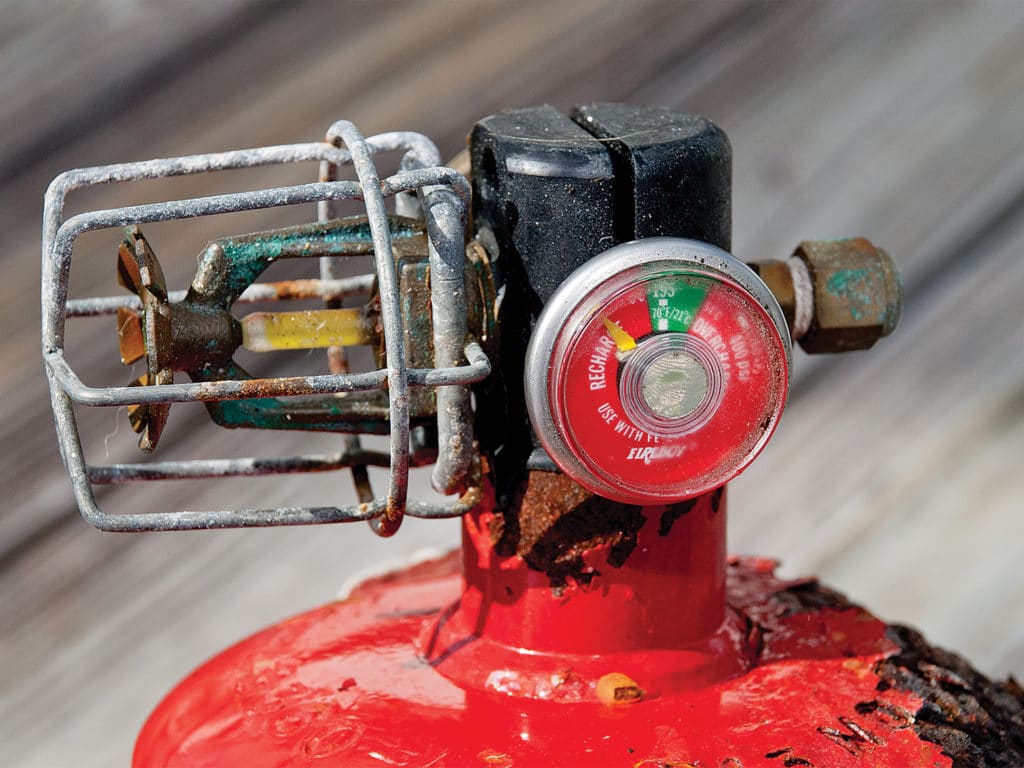
Agents and Alarms
Ellis says boats that still have older carbon dioxide systems, which might be lethal to anyone within the space when discharged, should consider an upgrade. Halon, which was discontinued in 1990 for ozone-depletion concerns, can remain if systems are in good order. The same is true of halon-replacing hydrofluorocarbon gases, such as Dupont’s FM-200 (HFC227ea), which are being phased out because of climate-change concerns from leaks and accidental discharge. The newest fluoroketone firefighting agent (FK-5-1-12), such as 3M’s Novec 1230, works equally well and breaks down in the atmosphere in a few days rather than the decades required to mitigate effects from the hydrofluorocarbons they replace.
While smoke detectors are ubiquitous in homes, most boats don’t have any, even though both the National Fire Protection Association and American Boat and Yacht Council recommend mounting at least one smoke or fire detector.
“If there is a fire anywhere on board, you want everyone to know right away,” says marine electrical consultant and certified forensic fire investigator James Coté. “Wireless interconnected units are easy to install: Affix one in the main cabin, in each sleeping space, in the engine room, and behind the electrical panel.” While marine-specific smoke detectors aren’t readily available, those built to Underwriter’s Laboratories standards for recreational vehicles are a good alternative.
The NFPA and ABYC similarly specify carbon monoxide alarms in the main salon and staterooms. Look for UL 2034 specification “Marine Carbon Monoxide Alarm.” Lithium batteries in the newest ones last through the unit’s life, at least five years.
Read Next: We show you how to tackle an electronics refit.
Choosing Portables
Fires outside the engine room can be stopped before they spread if addressed quickly with portables. Small, dry-chemical fire extinguishers are inexpensive, effective, and often built to be discarded and replaced rather than serviced, but they do need to be inspected. In addition to monthly inspections, some portable fire extinguishers—such as those with metal mechanisms rather than plastic—require annual service, which varies from a simple inspection to full disassembly.
Ellis advises using cleaner agents such as FM-200 in the galley, the engine room or near electrical equipment. Dry-chemical powder must be sprayed on the burning material, which makes it difficult to attack flames in hard-to-reach spaces, where clean agent gases work by discharging the nozzle and flooding the space within a compartment. Dry chemicals also stick to burning material, while gases dissipate in open air, so, on deck, dry chemical is probably most effective.
Vessel safety certainly requires reliable engines, but the next time you check the oil, check your fire system too, then ask yourself: Which emergency is worse? Drifting toward a perilous shore, or treading water watching your boat burn to the waterline?
This article originally appeared in the February 2022 print issue of Marlin.

